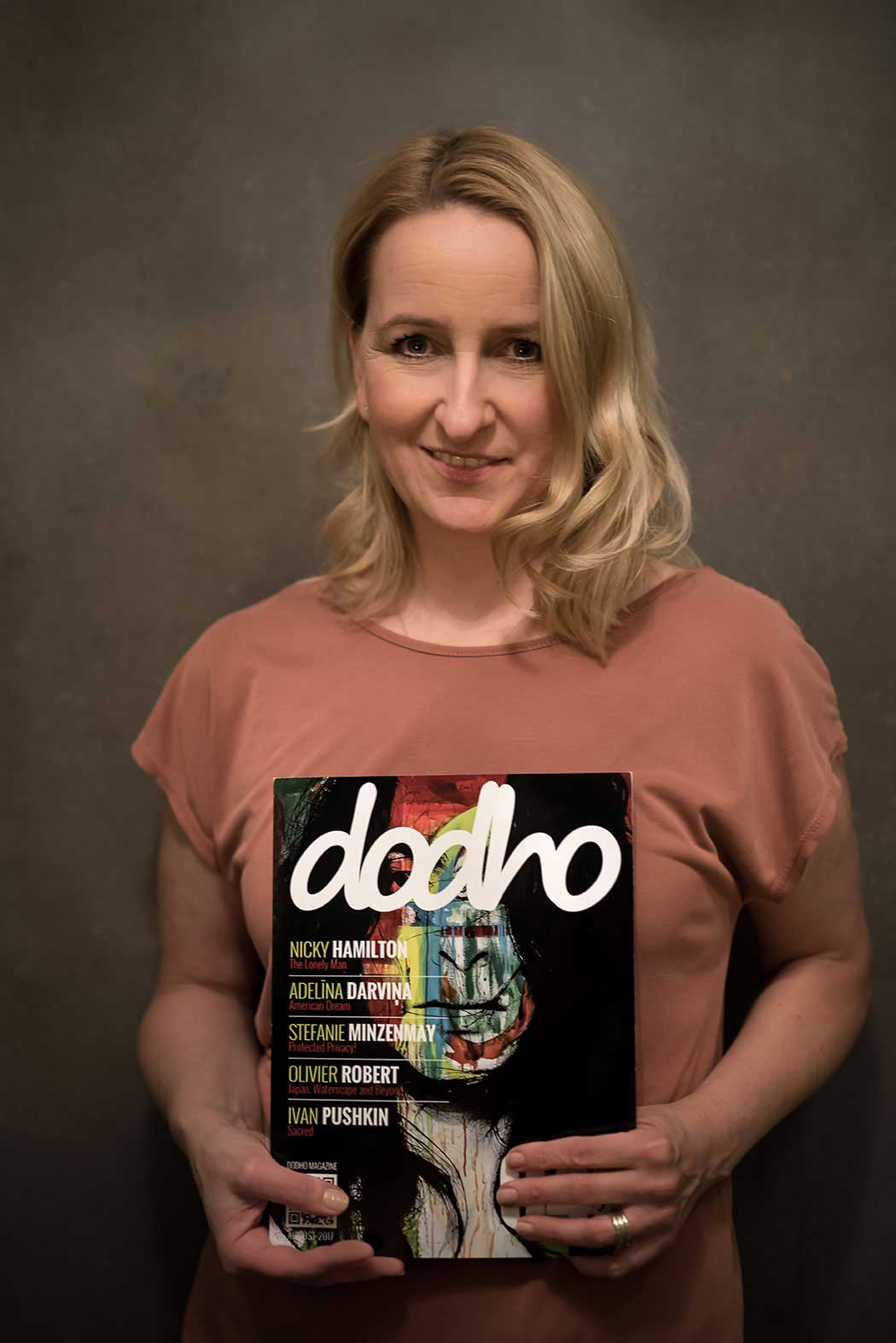Stefanie Minzenmay lives and works in Neuss, Germany. From 2011 to 2014 she attended classes at the School for artistic photography Düsseldorf, Germany and joint a variety of workshops at Lichtblick School, Cologne.
Since 2013 her work has been shown in various group and solo exhibitions (e.g. fiftyfifty Galerie, Düsseldorf (2013), Publika Whitebox Gallery, Kuala Lumpur (2015), “Eye Contact” PhotoWerkBerlin (2015), “Fünf ist eine gerade Zahl” onomato Kunstverein, Düsseldorf, Portraits-Hellerau Photography Award, Dresden (2016), Troner Art Consulting, Düsseldorf Photo Weekend (2017), “Protected Privacy”, Hellerau, Dresden, solo exhibition (2017), Studio Bronx, Neuss (2017), Kolga Tiblisi Photo Festival (2017).[Official Website] [Print Version] [Digital Version]
Can you tell a little about yourself?
I live and work in Neuss, Germany. It is a pleasure for me to work in my daylight studio, but I also like to travel a lot. Always being addicted to photography I have been thinking in a more conceptual way since 2014. In 2015 I established Studio Bronx along with 4 other artists, an interdisciplinary workspace for contemporary art and design research in Neuss.
What inspired you to take your Protected Privacy series?
The origin of my series was how young people deal with today’s media. As “digital natives” their use of the information possibilities offered by the Internet and social networks comes easily and natural to them. At the same time, through the use of social media, information is also being fed with uncontrollable permanence to this media. The granting of information secures one’s own participation.
However – and now it is getting interesting – due to a lack of information or by focussing on just one certain aspect, things could get even more interesting than by getting the full size of information.
What problems and challenges did you face when you took the shots of this project?
It is my utmost concern that the series preserves its strong conceptual and basic approach. Therefore, it has been always decisive to ensure identical studio conditions and to focus on the person`s own expressiveness.
Could you please tell us anything about your technique and creating process?
To put it in a nutshell: my motto is “Keep it simple and beautiful.” All the portraits are captured in a daylight studio without using artificial light. The covering of the faces is a very interactive process. Usually I suggest a first concept and tune up the models myself, however then after some shots the models start to generate some own ideas, which is always great fun.
How do you come up with ideas for your projects?
This is quite different. Sometimes I am inspired by a quotation or it’s a just simple item that attracts my attention.
Who are some of your favorite classic photographers, and how did they influence you?
I have been deeply impressed by photographs of Stephen Shore as one of the leading pioneers of new color photography and most significant photographers of our time. Heinrich Riebesehl and also the early work of André Gelpke are also very important to me. Heinrich Riebesehl established a non-commercial exhibition space in Hannover called Spectrum, for me a milestone for the pure photographic German infrastructure in the mid-1970s. This pioneering spirit is remarkable.
What first drew you to photography and how did you discover it?
I got my fist analogue camera at fourteen. Due to my rare pocket money every shot had to be well determined, precise and considerate. Taking pictures is like coming to a decision. This is an important aspect that still has validity for me.
How do you educate to take better photos?
By doing.
What are some tips you would give to yourself if you started photography all over again?
Being more patient, stricter and even more restrictive regarding final photograph selections and layout decisions.
What quick advice do you have for someone who wants to improve his or her photography skills?
See. Be inspired. Think. Do! Go out and join workshops, meet other photographers and go to exhibitions and photo festivals etc. rather to improve your technical skill than to see the work of other artists and photographers. Ask yourself some questions: How do you and your work differ from the other positions and why? How can you stress and intensify your own photographic handwriting and intention? What is your audience you want to reach?
What future plans do you have? What Projects would you like to accomplish?
Currently I am – with pleasure – in preparation for 3 exhibitions opening early next year. Afterwards, I deeply aspire to have a chance to visit the first Stephan Shore survey running through May at the MOMA, NYC
How important is an awesome website for your business and how has social media played a role in your photography?
I think that social media in today’s world plays an extremely important role, making in fact certain art phenomena part of a common culture. Well, business without them, of course, is difficult to build.
Finally, one las question. What opinion do you have of our print edition?
I very much like the print edition, because of showcasing so different kinds of photographic works (e.g. experimental and filmic photography, conceptual and documentary works and also fine art).
Once again the work of different photographers has been very well chosen and combined in this 04 edition, which is a perfect visual and haptic completion to the online dodho magazine. The combination of both tools, a haptic and a digital one, is pretty well compiled and committed to discover and promote remarkable photographic work from photographers around the world. Thanks!








